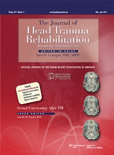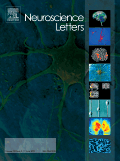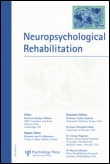
Brain Impairment
Scope & Guideline
Advancing knowledge in neurological conditions.
Introduction
Aims and Scopes
- Traumatic Brain Injury (TBI) Research:
The journal publishes research on various aspects of TBI, including its effects, rehabilitation strategies, and long-term outcomes. - Cognitive Rehabilitation and Assessment:
A significant focus is placed on cognitive rehabilitation techniques, assessment tools, and interventions for individuals with cognitive impairments related to brain injuries. - Psychosocial Aspects of Brain Injury:
Research addressing the psychosocial impacts of brain injury on patients and families, including emotional well-being, social integration, and quality of life. - Multidisciplinary Approaches to Rehabilitation:
The journal promotes studies that involve multidisciplinary teams in rehabilitation practices, highlighting the importance of collaboration among health professionals. - Innovative Interventions and Technologies:
Research on new and emerging interventions, including the use of technology, assistive devices, and novel therapeutic approaches in brain injury rehabilitation. - Cultural and Community Perspectives:
Exploring the impact of cultural contexts and community resources on rehabilitation and support for individuals with brain impairments.
Trending and Emerging
- Telehealth and Remote Interventions:
Recent publications show an increased focus on telehealth and remote interventions for brain injury rehabilitation, highlighting the need for accessible treatment options. - Psychological and Emotional Health:
There is a rising emphasis on the psychological and emotional aspects of recovery, including mental health interventions and the impact of anxiety and depression on rehabilitation outcomes. - Cultural Competency in Rehabilitation:
Emerging themes include the importance of cultural competency in rehabilitation practices, especially for Indigenous populations and other culturally diverse groups. - Family and Caregiver Support:
Research increasingly focuses on the experiences and needs of families and caregivers, recognizing their critical role in the recovery and rehabilitation process. - Technology-Enhanced Rehabilitation Tools:
The integration of technology, such as virtual reality and mobile applications, is becoming a prominent theme, with studies exploring their effectiveness in rehabilitation. - Community-Based Rehabilitation Models:
A shift towards community-based models of rehabilitation is evident, emphasizing the role of community resources and support networks in aiding recovery.
Declining or Waning
- Traditional Rehabilitation Methods:
There seems to be a decreasing focus on conventional rehabilitation methods, as research increasingly emphasizes innovative approaches and technology-driven interventions. - Generalized TBI Awareness Campaigns:
Public awareness campaigns related to TBI may be receiving less attention in favor of more targeted research on specific interventions and outcomes. - Single-Disciplinary Perspectives:
Research that focuses solely on a single discipline without interdisciplinary collaboration appears to be declining, reflecting a broader trend towards integrated approaches. - Longitudinal Studies without Immediate Application:
There is a noticeable reduction in studies that offer long-term data without practical applications, as the journal increasingly favors research with direct implications for clinical practice. - Studies on Non-Acquired Brain Injuries:
Research focusing on brain injuries not classified as acquired, such as congenital or hereditary conditions, seems to be diminishing in favor of a more acute focus on acquired brain injuries.
Similar Journals

JOURNAL OF CLINICAL AND EXPERIMENTAL NEUROPSYCHOLOGY
Unraveling the complexities of the human mind.The Journal of Clinical and Experimental Neuropsychology, published by Taylor & Francis Inc, stands as a pivotal resource in the realms of clinical psychology and neuropsychology. With an ISSN of 1380-3395 and an E-ISSN of 1744-411X, this journal has been a hallmark of scholarly excellence since its inception in 1985, continuing to shape the fields until 2024. It is renowned for its rigorous peer-reviewed articles and has garnered significant recognition, achieving a Q2 ranking in Clinical Psychology and Q3 rankings in various other relevant categories as of 2023. Serving as a bridge between clinical practice and experimental research, the journal underscores the critical role of neuropsychological assessment and intervention in enhancing mental health outcomes. Although not an open-access journal, it provides significant insights and empirical data that are crucial for researchers, clinicians, and students dedicated to advancing the understanding of cognitive functioning and psychological health. The journal's commitment to disseminating high-quality research contributes to its reputation and impact, making it a vital resource for those engaged in the study of neuropsychology and its clinical applications.

Brain Imaging and Behavior
Transforming Perspectives: The Science of Brain Imaging and BehaviorBrain Imaging and Behavior is a premier journal published by SPRINGER, dedicated to advancing the understanding of the relationship between brain function and behavior through innovative imaging techniques. Since its inception in 2007, the journal has provided a crucial platform for researchers and professionals in fields such as Behavioral Neuroscience, Cognitive Neuroscience, and Psychiatry and Mental Health. With an impressive ranking within the Q1 category in Radiology, Nuclear Medicine and Imaging and maintaining strong Q2 status in several other categories, the journal is positioned as a leading resource for groundbreaking research. The journal aims to disseminate high-quality studies that explore neurobiological underpinnings of behavior, utilizing cutting-edge imaging technologies. Although it is not an open-access journal, the visibility and impact of published works in Brain Imaging and Behavior continue to influence the scientific community significantly, underscoring the critical intersection between imaging science and neuroscience.

Neurology International
Pioneering Insights in Clinical NeurologyNeurology International is a prestigious open-access journal published by MDPI that has been making significant contributions to the field of neurology since its establishment in 2009. With its ISSN 2035-8377, this journal is committed to disseminating high-quality, peer-reviewed research that addresses a wide range of clinical topics in neurology. Operating out of Basel, Switzerland, the journal holds a respectable Q2 ranking in the clinical neurology category as of 2023, indicating its influence and dedication to advancing scientific knowledge. Researchers and practitioners alike will find value in its comprehensive articles, which are readily accessible to a global audience, facilitating the sharing of innovative findings and clinical practices. As it converges towards 2024, Neurology International continues to provide a vital platform for scholarly discourse, aiming to improve patient outcomes and enhance our understanding of neurological disorders.

JOURNAL OF HEAD TRAUMA REHABILITATION
Elevating rehabilitation practices for head trauma.JOURNAL OF HEAD TRAUMA REHABILITATION, published by LIPPINCOTT WILLIAMS & WILKINS, is a premier peer-reviewed journal dedicated to advancing the science and practice of managing head trauma and its rehabilitation. With an ISSN of 0885-9701 and an E-ISSN of 1550-509X, this journal has been a significant resource since its inception in 1986 and continues to provide critical insights into neurological and rehabilitative care, particularly as it spans the years until 2024. The journal boasts impressive rankings, including Q2 in Neurology (Clinical) and Q1 in both Physical Therapy, Sports Therapy and Rehabilitation, and Rehabilitation for 2023, underscoring its impact and relevance in the field. It is well-regarded in Scopus ranks as well, holding a rank of #27 out of 161 in Medicine Rehabilitation and #47 out of 247 in Health Professions. With no open access option available, the journal invites subscriptions and affiliations from academic institutions, healthcare professionals, and researchers committed to excellence in rehabilitation practices. Aimed at enhancing clinical techniques and methodologies, the JOURNAL OF HEAD TRAUMA REHABILITATION is essential reading for anyone invested in the recovery and rehabilitation of individuals with head injuries.

Journal of Neurorestoratology
Connecting minds: where neuroscience meets rehabilitation.The Journal of Neurorestoratology, published by TSINGHUA UNIV PRESS, stands as a pivotal resource in the evolving fields of neuroscience and rehabilitation. With focus areas encompassing cognitive neuroscience and neurological disorders, this Open Access journal, launched in 2013, fosters unimpeded global access to cutting-edge research and breakthroughs in neuro-restorative techniques and therapies. Although it is relatively new, it has demonstrated its potential impact within the academic community, ranking in the 51st percentile for Medicine _ Rehabilitation and contributing novel insights in the realms of speech and hearing, neurology, and cognitive neuroscience. With its commitment to disseminating innovative findings and promoting interdisciplinary collaboration, the Journal of Neurorestoratology plays a crucial role in advancing our understanding and management of neuro-rehabilitation, making it a valuable platform for researchers, healthcare professionals, and students alike.

NEUROSCIENCE LETTERS
Pioneering Research for a Deeper Neural Insight.NEUROSCIENCE LETTERS is a distinguished journal published by ELSEVIER IRELAND LTD, focusing on disseminating impactful research across the field of neuroscience. With its ISSN 0304-3940 and E-ISSN 1872-7972, the journal serves as a vital platform for researchers, professionals, and students aiming to explore the complexities of nervous system function and related disorders. Since its inception in 1975, NEUROSCIENCE LETTERS has contributed significantly to the field, currently positioned in the Q3 category for Miscellaneous Neuroscience, with a respectable Scopus rank of 52/113, placing it in the 54th percentile among its peers. The journal is published in Ireland and offers a comprehensive repository of scientific insights, methodologies, and innovative findings that advance our understanding of neurological phenomena. While not an open-access journal, it remains an essential resource for the latest advances in neuroscience research and the academic community’s collective knowledge.

NEUROPSYCHOLOGY REVIEW
Pioneering Research at the Forefront of Cognitive ScienceNEUROPSYCHOLOGY REVIEW is a prestigious journal published by Springer, dedicated to the exploration of cognitive processes and behavior through neurological and psychological perspectives. With its ISSN 1040-7308 and E-ISSN 1573-6660, this journal holds a distinguished position in Q1 of the Neuropsychology and Physiological Psychology category, ranking at #3 out of 76 with an impressive 96th percentile in Scopus. Since its inception in 1990, it has provided a critical platform for researchers, professionals, and students to disseminate and engage with comprehensive reviews and empirical research, promoting a deeper understanding of the interplay between neural mechanisms and psychological phenomena. Aimed at fostering interdisciplinary collaboration and advancement in the field, NEUROPSYCHOLOGY REVIEW invites contributions that push the boundaries of knowledge and stimulate ongoing debates in neuropsychology, making it an invaluable resource for anyone interested in the latest scientific advancements within this dynamic area.

Cognitive and Behavioral Neurology
Advancing the Frontiers of Cognitive and Behavioral NeurologyCognitive and Behavioral Neurology is a prominent peer-reviewed journal dedicated to advancing the understanding of cognitive and behavioral aspects of neurological disorders. Published by Lippincott Williams & Wilkins, this journal has established itself as a vital resource for researchers, clinicians, and students in the fields of cognitive neuroscience, neuropsychology, and psychiatry. With an ISSN of 1543-3633 and an E-ISSN of 1543-3641, it offers a robust platform for the dissemination of high-quality research, as evidenced by its positioning in the Q3 quartiles across various categories, including Cognitive Neuroscience and Psychiatry. The journal, which has been actively publishing since 2003, encourages innovative studies that explore the intersection of cognition and behavior in neurological contexts. As a vital contributor to the academic dialogue on these topics, it provides an essential archive of findings and discussions that inform clinical practice and educational approaches, reflecting its commitment to improving patient outcomes and enhancing neurological science.

BRAIN INJURY
Illuminating the complexities of neurological health.BRAIN INJURY is a leading international journal published by Taylor & Francis Ltd, dedicated to advancing the study of traumatic brain injury and its extensive neurological implications. With a rich history since its inception in 1987, this journal has established itself as a vital resource for researchers, practitioners, and policymakers in fields such as Neurology, Neuroscience, and Developmental Psychology. Holding a commendable Q2 quartile ranking in both Developmental and Educational Psychology and Clinical Neurology, as well as a Q3 ranking in Miscellaneous Neuroscience, BRAIN INJURY provides a platform for high-quality research that drives innovation in clinical practice and rehabilitation strategies. Although the journal is not open access, it continues to facilitate wide-reaching scholarly communication across the globe, contributing significantly to the understanding of brain injuries and their effects. Researchers, professionals, and students will find BRAIN INJURY a critical resource for both new insights and comprehensive reviews within this vital area of health science.

NEUROPSYCHOLOGICAL REHABILITATION
Advancing the Science of Cognitive RecoveryNEUROPSYCHOLOGICAL REHABILITATION is a prestigious peer-reviewed journal dedicated to the field of neuropsychology and rehabilitation. Published by Routledge Journals, Taylor & Francis Ltd, it stands at the forefront of research and development in applied psychology, arts and humanities, and rehabilitation, boasting an impressive impact factor and a distinguished ranking within various academic categories. With a strong commitment to advancing the science of rehabilitation and cognitive recovery, the journal aims to provide a platform for innovative research, systematic reviews, and clinical findings that inform best practices in the field. As it converges into its third decade of publication—from 1991 to 2024—NEUROPSYCHOLOGICAL REHABILITATION remains essential for researchers, clinicians, and students seeking cutting-edge insights and methodologies to enhance patient care and cognitive rehabilitation strategies.